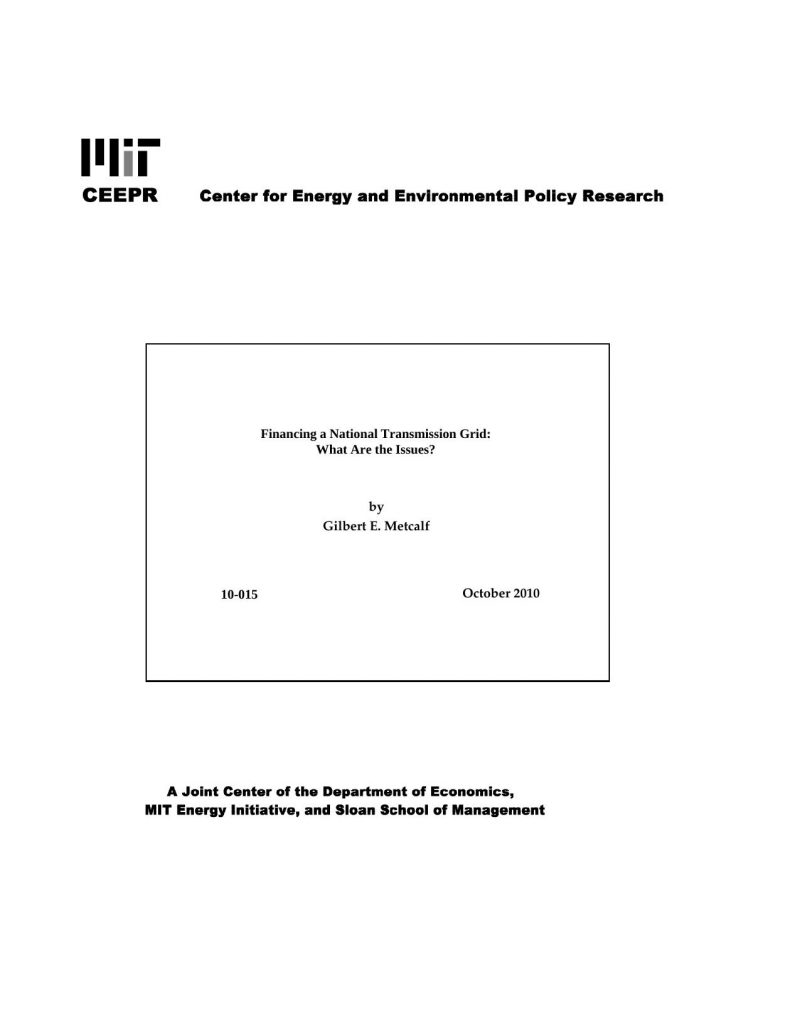Financing a National Transmission Grid: What Are the Issues?
Gilbert E. Metcalf
10-Oct
The United States requires a substantial investment in transmission capacity over the next several decades. This investment is needed to ensure system reliability, to accommodate growth in demand for electricity, and to allow the integration of significant amounts of renewable generating capacity. In this paper I survey the need for new transmission capacity and consider the financial and regulatory obstacles that stand in the way of this new investment.
This paper makes three points. First, the historical pace of transmission investments will not be adequate to enhance grid reliability or to allow largescale penetration of renewable generating capacity. Second, the replacement of a vertically integrated electric utility industry in many parts of the country by a more disaggregated one composed of merchant generators has added to the challenge of transmission planning and investment. Third, the focus on federal funding for grid improvements is misplaced. There is no evidence that the private sector is incapable of raising the funds needed for critical investment, provided a rationalized regulatory structure is put into place.
Making changes to our regulatory and political systems that facilitate transmission investment and siting will not be easy. But the costs of underinvesting in an improved and enlarged national transmission grid are high. Moving to a largely carbon-free economy by the middle of the century will require a transformation of the power system in this country, one that cannot be successful without a strong interstate high-voltage transmission backbone.



